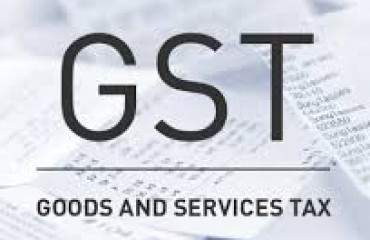
Mumbai: The Reserve Bank of India’s six-member monetary policy committee in August unanimously decided to keep the repo rate unchanged at 5.5% despite softer inflation. Minutes of the meeting released by RBI on Wednesday showed that US President Donald Trump’s tariffs played a key role in this decision.
Mumbai: The Reserve Bank of India's six-member monetary policy committee in August unanimously decided to keep the repo rate unchanged at 5.5% despite softer inflation. Minutes of the meeting released by RBI on Wednesday showed that US President Donald Trump's tariffs played a key role in this decision.
Would the panel have voted differently had the government's proposed changes to the goods and services tax structure been announced earlier? On Thursday, a group of ministers accepted the Centre's proposal to scrap the 12% and 28% tax slabs, and consolidate GST into two primary slabs of 5% and 18%—a move that's expected to lower prices for consumers.
Saugata Bhattacharya, an external member on RBI's rate-setting panel, spoke with Mint on the proposed GST rationalization's likely impact on inflation and the central bank's forecasts in the context of the US tariff uncertainties. The interview came with the usual disclaimer: his comments are his own and not of the RBI committee's. Edited excerpts:
Will the proposed changes to the GST rates have a meaningful impact on curbing inflation?
The proposed GST rate slab transition changes should initially result in a fall in prices of most goods and services. However, with higher disposable incomes likely to incentivise consumption demand, the second-round effects of output, investment, and growth on the prices of at least some goods and services are difficult to predict.
But on the whole, yes, there should be net lowering of prices of some items in the CPI (consumer price index) basket.
Would you have voted on the repo rate differently had the GST rationalisation proposal come before the meeting of the monetary policy committee?
This is just like the trade tariffs issue. Till a final recalibration and rationalisation of GST rates is finalised, and till the primary, secondary, and tertiary effects are understood, it is difficult to take a rate view on this issue.
Also read | Regulators must balance innovation and stability, says RBI deputy governor M. Rajeshwar Rao
The minutes show that you said it is difficult to provide even a modicum of forward guidance. How confident are you of the MPC's guidance on growth and inflation?
In this environment of continuing elevated uncertainty, particularly for India relative to our trade competitor peers, the best we can do is analyse different scenarios, assess their outcome probabilities, and the likely effects on economic parameters.
I would take the forecasts as indicating the general direction of travel rather than precise estimates. The statistical confidence bands of the fan charts of the forecasts will provide a better sense of the potential variability of outcomes. Sticking my neck out, at this point, I would be a bit more confident of the inflation forecasts.
Also read | Mint Explainer | GST 2.0 reform: Fewer slabs, lower rates, end of cess—what it means for you
Are you worried about the uneven rate cut transmission in lending and deposit rates?
Public data on transmission into lending and deposit cuts is at end-June. The magnitudes might have changed since.
As I have noted, the trade-off between borrowers' and depositors' behaviour, based on their respective interest rates, warrants careful analysis. The importance of domestic savings is likely to increase given the uncertainties on our external balance.
All of these are exactly the reasons why I have been advocating a cautious, calibrated approach to policy easing. However, the recent upgrade of India's sovereign ratings should be cause for optimism.
Also read | Kaushik Basu: India must not fall into Trump's tariff trap
Is there a concern that since easing food prices led to lower inflation, it could be short-lived? Is core inflation a more reliable measure?
We have seen multiple vegetables-led food inflation cycles since 2014. Charts of food inflation appear to show increased volatility in recent years. With climate-related events on the rise, food prices are vulnerable to weather shocks. The lower vegetables prices might also adversely affect cropping decisions, initiating a "cobweb" effect.
As for the appropriate metric to track inflation, this has been a topic of debate almost since the inception of the FIT (flexible inflation targeting) framework in 2016. In addition to the headline and core inflation measures, we also track various synthetic inflation metrics.
RBI's recent study provides multiple insights on interactions between household inflation expectations and the price formation process, emphasising the importance of headline inflation.
